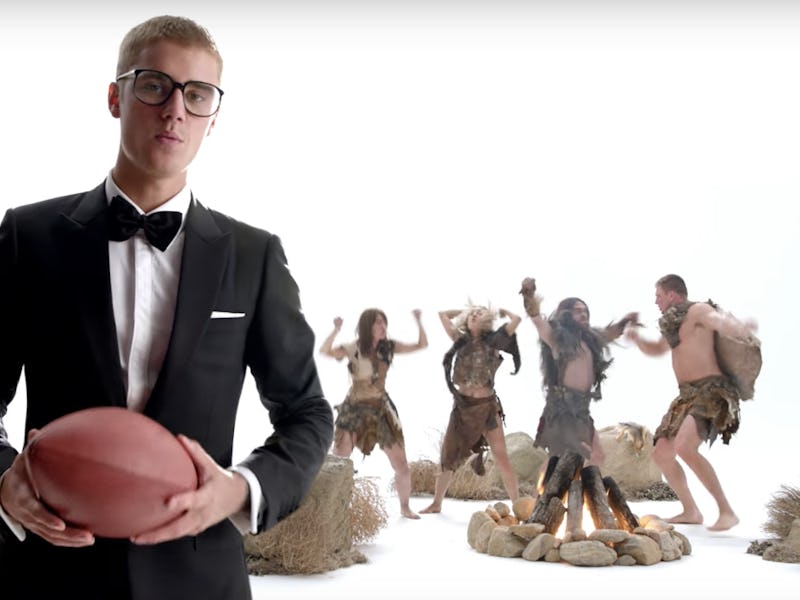Justin Bieber's Super Bowl Ad Is an Unexpected Lesson in Celebration Science

Occasional nudist and pop lord Justin Bieber literally and metaphorically wears many hats, but “scientist” has, thus far, not been one of them. That has changed: In a new Super Bowl LI ad for T-Mobile, Bieber poses as a “celebration expert,” and his retelling of the history of human revelry behaviors is unexpectedly accurate, according to social psychology.
In the ad, released on Friday, a bespectacled Bieber, explaining how humans celebrate, says, “First there was the high five.” The camera cuts to New England Patriot Rob Gronkowski high-fiving another cave man. “Then, there was the ‘Gronk spike,’” he adds as Gronkowski slams a football into the ground. He proceeds to describe a series of dance moves, which are all variations on the “shimmy.” These, he concludes, add up to the key elements of human celebration. He isn’t wrong.
Celebration is, in essence, a social phenomenon that happens when a bunch of individuals are excited about the same thing and wish to share their emotions with others. They know about each other’s positive emotional state because they communicate it not only through language but also through non-verbal communication, like touch, loud noises, and movement — as Bieber points out, albeit indirectly.
Psychologist Dacher Keltner, Ph.D., who runs the University of California-Berkeley’s Social Interaction Laboratory, pointed out in a 2015 video on high-fiving that other great apes use touch to communicate good will, and so it is not surprising that humans do the same. His lab analyzed all the high-fives, fist-bumps, butt taps, and other celebratory hand gestures that went on during an entire season’s worth of NBA basketball game, discovering that the teams that touched the most also did better and on the whole played more cooperatively. In the video, he says that hand gestures are a good way to “build up cooperative communities.” The high five between Gronk and his fellow caveman is, in this view, a way of non-verbally communicating “Yeah, dawg!” to each other.
The Gronk spike can be viewed as a similarly non-verbal expression of a parallel sentiment. Dude is just excited that he scored a sweet touchdown, and he wants you to know! (Of course, whether one interprets his behavior positively or negatively depends on many other factors.)
Meanwhile, the Biebs’ emphasis on dancing is also rooted in communication. Studies on the evolution of dancing among humans suggests that it was integral to early human communication; in the days before language was common, a 2013 study in PLoS One suggested, dancing — a display of “shared intentionality” — increased cooperation between individuals, which was necessary for survival. Presumably, different types of dances communicated different things; if Bieber is correct, the shimmy, the shake, the shimmy shake, and Terrell Owens’ unnamed signature dance moves all say the same thing: Wooooooooooo!